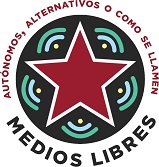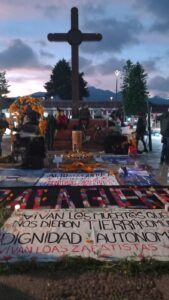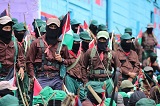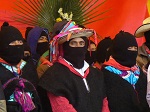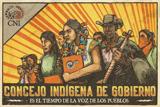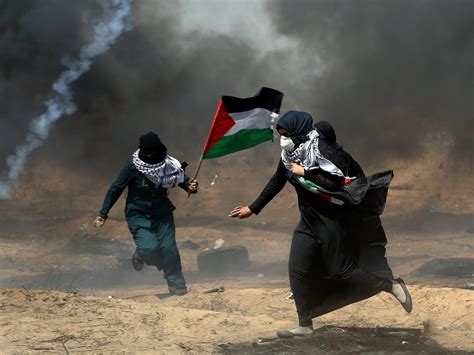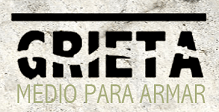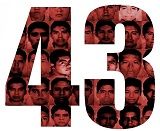Jornadas de lucha y resistencia en defensa del Común y en contra de la Guerra a los Pueblos Zapatistas
06 de octubre de 2025
CLAUDIA SHEINBAUM PARDO
Presidenta de México:
Nosotras, mujeres y disidencias de distintos estratos económicos, distintas geografías, culturas, lenguas y colores, organizadas y no organizadas, sentimos en nuestro corazón el dolor de las mujeres y niñas zapatistas, así como de las hermanxs no zapatistas que junto a sus familias participan del Común y que, ahora, están sufriendo el despojo de su territorio. Lugar que guarda los ombligos y los espíritus de nuestrxs ancestrxs que fueron explotadxs, primero por los invasores y luego por los finqueros en tierras recuperadas en 1994.
Señora Presidenta:
¿Qué siente usted frente a estas violencias?, ¿Dónde está el respeto a los pueblos originarios que su gobierno predica?, ¿Usted es parte de esta estrategia para confrontar a los pueblos?
Legalizar las tierras con papeles para unos y despojar de tierras a otrxs que las trabajan, parece perversa restitución, que nada tiene que ver con la Justicia.
Le recordamos que como mujeres desde tiempos ancestrales organizamos y construimos la vida familiar, comunitaria y social, para el bien y cuidado común, no para el enriquecimiento de unos cuantos.
¡Respeto a las Autonomías y a los territorios recuperados por las luchas de los pueblos… y viva Palestina libre!
Atentamente, las abajo firmantes.
Firmas nacionales de Colectivxs y organizaciones:
Casa de apoyo a la mujer Ixim Antsetic. Chiapas.
Coarte, Chiapas.
Colectiva Cereza, Chiapas.
Colectiva de Mujeres Forenses la Wiccan forense, México.
Colectiva Nuestra Alegre Rebeldía, Morelos.
Colectivo Antsetik Ts’unun. Chiapas.
Colectivo Nasakobajk, Chiapas.
Colectivo Tsijil ba’ bij. Chiapas.
El bordado de Ramona. CDMX.
Espacio de Mujeres de la Sexta Jovel, Chiapas.
Grupo de Medicina Tradicional de San Pedro Atlapulco. Estado de México.
Grupo de Salud y Naturaleza de la Sierra de Santa Catarina. Estado de México.
La Flor de la Palabra, Medicina Tradicional, México.
Movilidades Libres y Elegidas-Colibres, Chiapas.
Movimiento de Mujeres de Kurdistan en Abya Yala, América Latina.
Movimiento de Mujeres en Defensa de la Madre Tierra y nuestros territorios, Chiapas.
Movimiento de Salud y Naturaleza. Estado de México.
Mujeres de la Comisión de Apoyo a la Unidad y Reconciliación Comunitaria (CORECO). Chiapas.
Mujeres de la Red de Resistencias y Rebeldías AJMAQ. Chiapas.
Mujeres de Maíz en Resistencia, Chiapas.
Mujeres del Centro de Derechos Humanos Fray Bartolomé de Las Casas, Chiapas.
Mujeres del Colectivo Batsilk’op, Chiapas.
Mujeres del Colectivo La Insurgente, Chiapas.
Mujeres del Espacio de Lucha contra el Olvido y la Represión (ELCOR), Chiapas.
Mujeres del Grupo de trabajo no estamos todxs. Chiapas.
Mujeres integrantes de Servicios para una Educación Alternativa AC, EDUCA, Oaxaca.
Mujeres Tierra y Libertad, CDMX.
Red de abogadas indígenas, Capítulo Chiapas.
Red de mujeres chiapanecas.
Red de Mujeres de la Costa en Rebeldía. Chiapas.
Red de Mujeres que Luchan en el Oriente. Edo de México.
Red de mujeres Zoques, Construyendo Esperanza, Chiapas.
RICCA_México.
RIZOMA, Chiapas.
Unitierra Kaxunik, México.
Unitierra, Puebla.
Vivas nos queremos. Arte y acción feminista, Chiapas.
Xch’ulel Antsetik San Cristóbal de Las Casas, Chiapas.
Firmas nacionales individuales
Adel Gutiérrez, Colectiva zapatista somos batallas ganadas CDMX.
Alejandra Vargas de la Cruz. CDMX.
Aleida Ruiz Alemán. CDMX.
Araceli Osorio Martínez. CDMX.
Aurelia Cano Álvarez, CDMX.
Azalia Hernández Rodríguez, comunicadora, Chiapas.
Beatriz Vázquez Torres. CDMX.
Bertha Navarro, cineasta, CDMX.
Blanca Estrella Ruiz, Estado de México.
Blanca Ibarra, México.
Blanca Lilia Narváez Ribera, Baja California, México
Bonifacia Hernández Flores, Baja California, México
Brenda Natividad Hernández Cruz, buscadora, Veracruz.
Carmen Maldonado Vargas, Facultad de Ciencias UNAM, CDMX.
Carolina Díaz, CDMX.
Cecilia Vázques Olivera. Defensora de derechos humanos, Chiapas.
Cecilia Zeledón, Puebla.
Citlali Yisel Anguiano Hernández, Etnohistoriadora feminista. CDMX.
Concepción Suárez Aguilar, defensora y realizadora de Nantik Meche comunicación popular, Chiapas.
Cristina González Serna. Chiapas.
Dalia Alejandra Luna Muñoz, CDMX.
Debhora Vega, Colima.
Demetria Cano Álvarez, CDMX.
Diana Gabriela Aranguren Quevedo, Baja California, México.
Diana Itzu Gutiérrez Luna. Defensora, Chiapas.
Edith Rosales Gutiérrez, México.
Elena Katzestein Ferrer, Baja California, México.
Elisa Cruz Rueda, profesora investigadora de tiempo completo, de la Escuela de Gestión y Autodesarrollo Indígena, UNACH, Chiapas.
Fernanda Navarro, filósofa, CDMX.
Gabriela Vega Martínez, socioantropóloga feminista, CDMX.
Gloria Guadalupe Flores Ruiz, defensora, Chiapas.
Gloria Luz Rascón Martínez, Mujeres y la sexta, CDMX.
Gloria Marina Figueroa Aguilar, defensora, Chiapas.
Guadalupe Andrea Pérez Mendoza, Sánchez. Terapeuta de adultas mayores, Chiapas.
Guadalupe Cantoral Cantoral, Académica, Chiapas.
Guadalupe Castillo Feliciano, profesora, CDMX.
Guadalupe Díaz Hernández, defensora, Chiapas.
Heleanne Beltrán Sánchez, CDMX.
Iliana Vázquez Díaz, defensora y Maestra en estudios de la mujer, CDMX.
Irazú Gómez García, antropóloga Feminista, Chiapas.
Juana Chávez Hernández, Estado de México.
Jennifer Haza Gutiérrez, defensora de derechos humanos, Chiapas.
Jesica Araceli Maldonado, CDMX
Julieta Hernández Gómez, abogada feminista, Chiapas.
Katia Tirado, CDMX.
Liliana Aguilar del Valle, Chiapas.
Liliana López, cineasta, Chiapas.
Lourdes Gutiérrez, promotora rural, Chiapas.
Luciana Kaplan, cineasta, México.
Lucrecia Gutiérrez Maupomé, editora de cine, México.
Magali Caballero, editora, Chiapas.
Magdalena García Durán, Pueblo Mazahua, CDMX.
Malva Marina Carrera, Michoacán.
Manuela Martínez, originaria del pueblo Santa Cruz Acalpixcan, Xochimilco, CDMX.
Marcela Fernández Camacho, abogada feminista. San Luis Potosí.
María Cristina Peralta Casillas, Baja California, México.
María de la Luz García Moya, docente de Antropología Social, Chiapas.
María del Carmen Briceño Fuentes, Baja California.
María Elena Aguayo Hernández, México.
María Estela Barco Huerta, defensora, Chiapas.
María Gabriela López Suárez, comunicadora independiente, profesora-investigadora, Chiapas.
María Inés Roqué, cineasta y docente, CDMX.
María Luisa de la Garza Chávez, académica, Chiapas.
Mariana Martín Romero, Tijuana/CDMX.
Maricela Sánchez Gómez, abogada tseltal, Chiapas.
Maris Sofía Flores Cruz del REDMYCZ y Mujeres y la Sexta, académica del CCH Sur, CDMX.
Marisa Ruiz Trejo, Pluriversidades Feministas, Chiapas.
Marta Alicia Pérez Sánchez,Baja California.
Martha Cano Álvarez, CDMX.
Miriam Itzel Linares Rojas, MC en manejo de recursos naturales y desarrollo rural, Chiapas.
Noelia Rodríguez Castañeda, Chiapas.
Norma Angélica Silva Gómez, CDMX.
Nuria Natalio Modesta. Chiapas.
Oralba Castillo Nájera, Red morelense de apoyo al CNI y CIG, Morelos.
Perla O. Fragoso Lugo, antropóloga social. Chiapas.
Rebeca Francisca Lara Flores, antropóloga feminista, Chiapas.
Rocio Martinez, Ts’ujul, historiadora, Chiapas.
Rosa Esther Rosano Rodríguez, Oaxaca.
Rosa López Santiz, defensora de derechos humanos, Chiapas.
Rosa Luz Pérez Espinoza, socióloga, Chiapas.
Rosa Paulina Reséndiz Flores, Baja California.
Rosalba Estanislao Gutiérrez, Estado de México.
Sandra Estrada Cano, Estado de México.
Sashenka Fierro Resendiz, Baja California.
Siria Garibay Marrón, Baja California.
Stella Maris Figueroa, Chiapas.
Tamara Faro Aguilar, Chiapas.
Tania Mitzi Gallaga Hernández, Baja California.
Valentina Leduc, documentalista, CDMX.
Vanessa Guadalupe Vázquez Ortiz, Estado de México.
Yalina Montes Cruz, profesora jubilada. Chiapas.
Yolanda Nime, México.
Firmas internacionales de organizaciones y colectivxs:
Asamblea de Mujeres y Disidencias del Movimiento por el Agua y los Territorios MAT, Chile.
Barría Autónoma Disidente Trasnacional México- USA.
Colectiva de Mujeres Arpilleristas de Francia.
Comité de mujeres Chiapas – Kurdistán.
Cooperativa Agrícola de Pau Brasil.
Feminismo Comunitario Antipatriarcal, Bolivia.
Hackeo cultural, Mesoamérica.
Instituto ECOBAHIA, Brasil.
Instituto Pau, Brasil.
La Revuelta, Grupo de economía feminista emancipatoria, AbyaYala.
Las Cabras del Cerro, Valparaíso, Chile.
Mujeres y disidencias de la Sexta en la Otra Europa y Abya Yala, Red de Resistencia y Rebeldía.
Núcleo de Agroecología e Permacutura de Universidades Estadual do Sudoeste da Bahía.
Red Futuros Indígenas, Abya Yala.
Firmas internacionales individuales:
Adriana Guzmán Arroyo, Feminista Comunitaria, Bolivia.
Adriana Luna, Marsella, Francia.
Andrea Ixchiú, maya k´íche, defensora y comunicadora, Totonicapán, Guatemala.
Antonieta Pardo Alarcon, Grenoble, Francia.
Brígida Salgado, Escola das Águas Nascentes, Associação das Caiporas, Brasil.
Cybèle David, maestra y sindicalista. Sud Solidaires, Francia.
Hortensia Inés, activista en Sindicato Solidaires Francia.
Jeanne Daniellot, Francia.
Jules Falquet, socióloga. Francia.
Juliette Duquesne, Carnets d´alerte, periodista, Francia.
Liliana Huljich, Red de solidaridad con Chiapas de Rosario, Argentina.
Maria Luiza Raberes Araújo, Coletivo Buranhém, Porto Seguro e região, Bahia, Brasil.
Mónica Hernández Rejón, Malmö, Suecia.
Nuvia Alarcon, Grenoble, Francia.
Rozilene Lemos de Oliveira, MLT – Movimento de Luta pela Terra, Eunápolis, Bahia, Brasil.
Suzana Raberes Rocha, NUPOMAR – Núcleo de Pesquisa, Mídias e Arte, Camacã, Bahia, Brasil.
Violeta Gallardo, activista en Sindicato Solidaires Francia.


